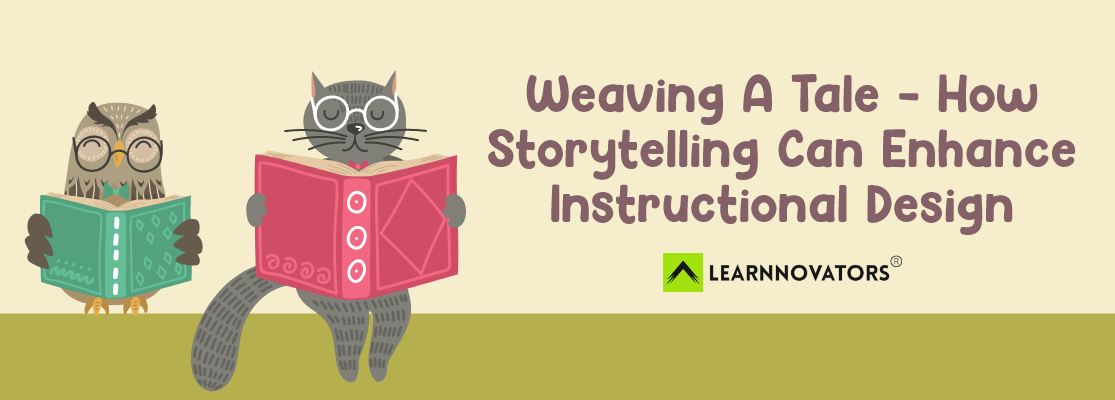Picture this scene in the 1980s. Make it black and white if you will.
Somewhere in South Madras*. A hot summer evening. A house on a quiet street. Quiet except for the shrill sound of children laughing. And the tranquil voice of an old woman… as she regales nearly a dozen tots of all sizes with tales from the Ramayana and Mahabharata*.
As our jaws fall open in wonderment at the pregnant pause in her story, she deftly picks up a handful of food and shovels it into each of our mouths.
We don’t mind.
Thoughts racing and mouths still agape, we’re waiting for what’s to come next in the story.
And so she continues this skilful manoeuvre until her huge vat of food is empty, by which time her story ends too. Or, ends on a note that enables her to pick it up the next day… allowing us to get back to our monkeying around.
—–
And that, my friends, is the power of storytelling. The only tool, perhaps, in the arsenal of the parents and grandparents of the time who had to ‘get kids to do’ a variety of things without using a variety of screens. Kids who’d rather be hanging upside down from trees or ransacking neighbours’ homes in a bid to play hide and seek, than engage in boring acts such as eating.
And, one helluva storyteller she was… my grandma.
* Madras was the official name of the city we know today as Chennai, in India.
* Ramayana and Mahabharata are two ancient epics that are part of the Hindu culture.
—–
That’s okay. Interesting story and all, Vidya. But why are you telling me all this? And what does it have to do with instructional design?
Glad you asked!
Now, you already know that engagement is the holy grail of education. While the end goal of education is effective education; for us to reach that end goal, we need to be able to get through to the learner by engaging their senses and getting them to pay attention to the material.
And, one of the most potent tools to engage the learner? Yep. You guessed right. It is storytelling.
When you’re able to engage learners with your storytelling, they are more likely to pay attention, retain information, and be motivated to complete the learning activity. Here are a few other ways in which stories can help:
- They can make the material more interesting for the learner.
- They can help better understand and remember the material.
- They can help the learner relate to the material on a personal level and see how it applies to their own experiences.
- They can be a way to make complex material more accessible by presenting it in a way that is easy to follow and understand.
Most importantly, stories evoke emotion. And the right emotions help in creating empathy, providing new perspectives, and calling for action.
So, how can you bring the magic of storytelling into your work as an instructional designer? Here are some ways to help you get started:
1. Create compelling characters, and make them relatable to your audience
Think of your favourite characters in movies. What makes them click? A couple of examples that come to mind for me:
- Simba in The Lion King
- Ryan Stone and Matt Kowalski (Sandra Bullock and George Clooney) in Gravity
What is it about these “remote” characters that make people fall in love with them? A lion that lives in the jungle? An astronaut in space? I would say that even when these characters are unrelatable to most people on the face of it, their makers have given them certain personal and situational qualities to make them relatable and likeable.
For example, if you take away the fact that Simba is a lion who lives in the jungle, it’s actually extremely easy to connect with him. He’s a kid who grows up surrounded by friends and family, likes to goof around and have a good time. And then his father is killed, and the blame falls on him.
Similarly, Stone and Kowalski are astronauts on a space mission. Something that most of us can’t relate to. However, there are moments where they discuss more mundane topics, like Stone’s home life and her daughter who died young. Kowalski’s wife cheating on him. And their music preferences. These are the moments where you get a peek into the window of an astronaut’s life, making you go “Ah, I can relate to this person.”
In another post, I talked about creating detailed personas that mirror your learners’ challenges and capabilities. Use those personas in defining these characters and the struggles they’re going through. That way, you make your characters relatable to your audience.
Imagine you’re designing an online course about financial planning. You might introduce a character named Sarah, a young professional who is struggling to get a handle on her finances. Maybe she has student loans to pay off, or is saving up to buy a home. Sarah could serve as the learner’s guide through the material, asking questions and providing examples that help make the content more relatable. Or, you might pair Sarah with another character in a similar position. Through their conversations and the way they improve their own finances by going through the material, your learner learns to do the same.
2. Use conflict to drive the plot
In fiction writing and movies, conflict happens either in fantastical settings (e.g., a villain is out to destroy the world), or more mundane ones (e.g., a boyfriend from the past has resurfaced and is out to cancel the wedding).
In the context of instructional design, conflict might take the form of a problem that your learners must solve. For example, for a course on project management, you might present a scenario in which a team (your character/s) is struggling to meet a deadline due to miscommunications and lack of clear goals. As the character works through the material, they’ll learn how to overcome these kinds of challenges and be better prepared to succeed in the real world. And, so will the learner.
In our example in the first point above, the conflict facing our character Sarah is the financial difficulty she’s dealing with. Expand on this struggle in your story so that it makes your learner want to help Sarah (and themselves) become successful.
3. Build a rich, immersive world
Rather than just presenting dry facts and figures, use descriptive language and media elements to bring your material to life. This doesn’t necessarily mean that you need 3D animations or other fancy technologies. Though they are nice to have, they’re not essential for your stories to connect with your audience.
To better understand this, imagine the most highly produced movies with the biggest budgets. I would say, in recent times, these were Avatar or The Life of Pi. Well. Not exactly recent, but you get the point.
Now, imagine a movie that was not very high budget, but still you connected with. For me, there are many such movies, but the one that comes to mind is The Shawshank Redemption. Through a simple voiceover by Ellis “Red” Redding, one of the key characters, the movie manages to convey the main sentiments at different points in the movie.
Think of what your equivalent of The Shawshank Redemption is. What is it about the movie, its plot and its characters, that makes you connect? Try to incorporate those elements into your next course.
4. Embrace the power of storytelling structures
There are many tried-and-true frameworks you can use to craft a compelling story. For example, the three-act structure is a classic framework that consists of setup, conflict, and resolution. Alternatively, you might consider using the hero’s journey, a narrative structure that follows a hero as they embark on a quest, face challenges, and ultimately triumph. Experiment with different structures to find what works best for your content.
5. Don’t forget the emotional connection
The most powerful stories are the ones that connect with us on an emotional level. As you design your material, think about how you can tap into your learners’ feelings and create an emotional response. For example, if you’re teaching a course on environmental sustainability, you might include a case study about a community that was directly affected by pollution, helping your learners understand the real-world consequences of environmental issues. Here again, I’d encourage you to think about your learner personas. How can you leverage these personas to get your learners to connect with your story?
What have I missed? What storytelling strategies do you employ to enhance your instructional design work?
Written by Srividya Kumar, Co-Founder @ Learnnovators






